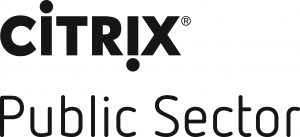This article is an excerpt from GovLoop’s recent report, “Building Digital Workspaces to Meet the Needs of a Changing Government Workforce.” Download the full report here.
No longer can government employees be expected to tackle all of their responsibilities from a desk chair. Now, everything from emails to data-heavy applications needs to be available from anywhere – at any time and on any device.
While governments streamlining workflow processes for employees makes their lives easier, the choice to virtualize isn’t one of convenience. Agencies have to virtualize to keep pace with accelerating citizen demands, which are molded by an increasing dependence on technology in day-to-day life.
Current workflows are inefficient, tedious and insecure. Over the years, government has purchased a menagerie of legacy technologies that are not compatible and have to be housed on different structures, digging itself into a technological hole.
With a tangled mess of legacy applications, employees’ productivity is very limited. Communication is cut short between coworkers, and having to translate workflows from application to application considerably lengthens the process of deliverables. Employees, tied down to outdated workplaces and applications, struggle to get the job done.
Furthermore, while organizations have realized the shortcomings of their software and applications, they’ve been unable to break away. As data migrations away from legacy applications require agencywide cooperation and can directly affect other workflows, leadership has been reluctant to make the shift.
Diminished productivity is far from the only downside to legacy technology, though.
The existence of legacy applications housed on a variety of platforms leaves agencies with constant security concerns. Hackers have more endpoints to access, and legacy systems are more vulnerable to tech-savvy intruders than newer, single sign-on (SSO) technologies that verify the identity of the user.
Securing antiquated systems adds extra expense, but sometimes even additional investment cannot help. Without proper visibility across legacy applications, protecting a disparate array of endpoints is a serious challenge for government IT and security departments.
What was once a headache for managers in government has become a migraine. In 2018, legacy maintenance and upkeep accounted for 79 percent of federal civilian agency IT spending, leaving just 21 percent to new investments, according to IDC.
Just as legacy technologies can lock employees into a system of inefficiency, digital workspaces can build collaborative, accessible workflows.
Digital workspaces are virtual – rather than physical or hardware-based – workspaces. With a secure digital workspace, agencies can make their applications and data available to any employee on any device in any location.
Application layering facilitates this capability by separating apps from the underlying operating system. Then, they can be managed once but delivered across multiple devices.
With the right virtual application and desktop solutions, agencies can empower their mobile workforce. But to ensure security and operability, you also need to run your virtual workloads on a secure cloud environment, which saves valuable resources. Cloud solutions are easily scalable to new environments, require minimal maintenance by IT staff and reduce hardware expenses.
Virtual apps and desktops are necessary components of the modern government workforce. They enable mobility and security, improve user experiences and enhance productivity. When they run on a secure cloud environment, virtual capabilities can transform the way agencies achieve their missions and keep pace with change.






Leave a Reply
You must be logged in to post a comment.